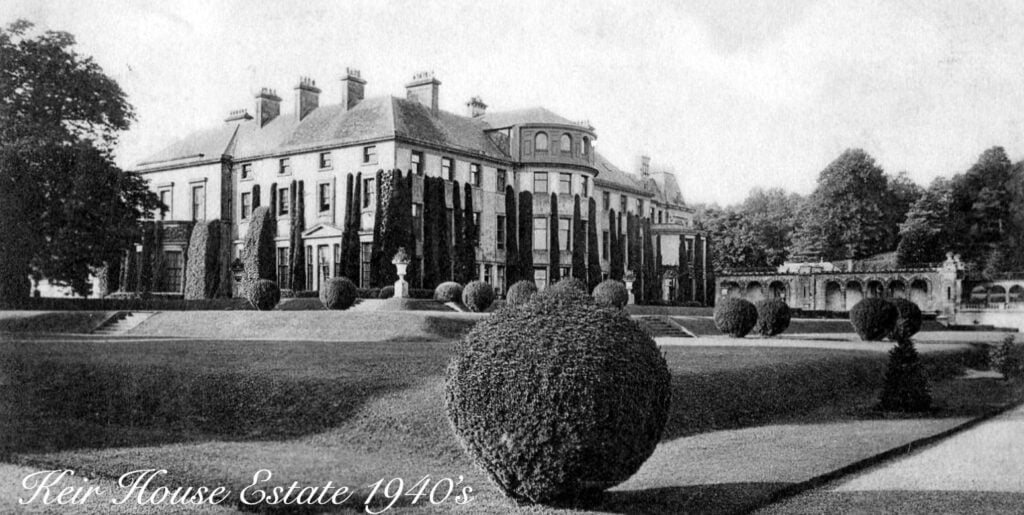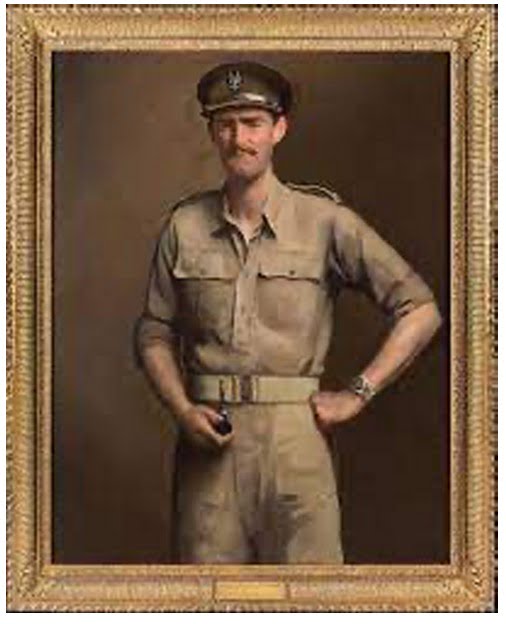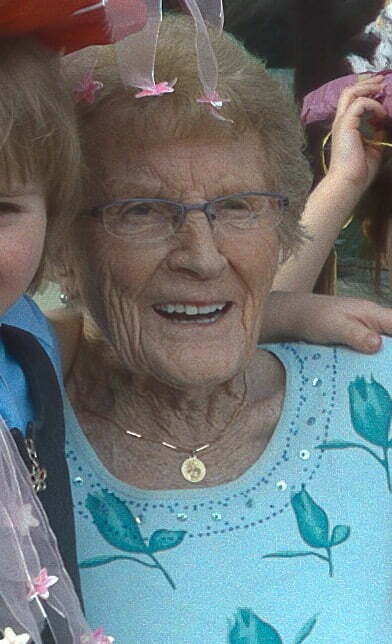My Gran the inspiration for “The Entrepreneur; White Ball Thinking”
Mary Dermody
There were three things everyone knew about Mary Dermody: her tireless work ethic, forthrightness and energy for life. But her fellow workers knew nothing about this young woman or her past and what fuelled her powerful sense of self reliance.
Mary appeared out of place among the many servants and estate workers on Keir House Estate in Bridge of Allan. Unlike the rest of the estate staff shuffling about with their drooped shoulders Mary walked with the same brisk upright poise as the young 6ft 6 inches Lord David Stirling. You would easily have mistaken her for the young lady of the house not a kitchen hand, until she opened her mouth and you heard her sharp Irish lilt. At seventeen years old she was a meagre 5ft 2 inches tall with a small neat frame. She had a regimented appearance; neatly styled shoulder length red auburn hair, immaculately shined shoes and crisply pressed uniform.
When Mary arrived off the boat from Ireland all she had in her small suitcase was enough clothes to see her through her stay with her cousins for the summer in the village of Dunblane. She didn’t anticipate that due to the outbreak of the Second World War she would be left stranded in Scotland on mainland Britain unable to return home. Luckily for Mary her Uncle Robert managed to find a brief opening on the large country estate for the summer as a fruit picker. There she was quickly noticed for her efforts by the gamekeeper who gave Mary a personal introduction to Lady Stirling.
‘I have been told by our Gamekeeper that you could put most men to shame with your capacity for hard labour dear,’ stated Lady Stirling during her job interview.
Mary was an invaluable asset to the Stirling household always in demand for extra duties by the butler and head housekeeper. On several occasions the Lady of the house had to intervene as head housekeeper attempted to steal Mary from her duties in the kitchens to work on the house keeping. There was no way Cook was losing her prized baker with meticulous organisational skills and creativity of how to utilise every morsel of food that entered the kitchen pantry. Without instruction Mary would use every part of game or fish sourced from the estate by the gamekeeper. She found a use for everything from the leather and fur from the hides of the rabbits and deer, every joint of meat for roasts including offal for pies, using left over bones for her famous Irish broth.

There was many a night that the butler would find Mary sitting by the kitchen fireplace with a darning needle and wool, stitching a ladder in her wool tights or hand knitted pullovers ensuring a pristine appearance for the next days work. Private and always the professional no one knew anything about Mary’s past, her background or upbringing.
Neither her employer nor work colleagues knew that every penny earned went straight back to her family in Ireland. Only on a brief Sunday afternoon when given leave and in the company of her cousins in Dunblane would she drop her guard and share the other side of Mary. However that was about to change!
#
Early one morning in September a young man arrived at the estate for a private interview with Lady Stirling. In his possession was a personal hand written reference from Lady Stirling’s sister-in-law from his employment in Lyons tearoom in London. The young man originally from Lanarkshire had returned to Scotland after his brothers had been conscripted into the army. Now alone in London aged seventeen with the Lyons tearoom in Grosvenor Square now bequeathed to American Army Personnel, the young man was forced to return home to Scotland to seek employment.
By coincidence this morning Mary had been assigned housekeeping duties due to a shortage of housemaids. And as the young man made his way up the beautiful carved wooden staircase, rehearsing his interview pitch he abruptly bumped into petite Mary carrying a pile of neatly pressed linen. Without hesitation Mary indignantly gave him a scolding, telling him with her sharp Irish tongue to watch where he was going. To Mary’s surprise the confident young whippersnapper jokingly chided her for attempting to carry too much for her short stature. He proceeded up the stairs to his appointment briefly glancing back as he reached the top landing observing an unusual red faced Mary marching indignantly down the stairs.
To Mary’s dismay the young man named Duncan Burns received the new appointment as footman to Lord David Stirling, who was soon returning from his travels along the Rio Grande and training for an attempt to climb Mount Everest. As the youngest of the Keir House staff Mary and Duncan would regularly be assigned duties and chores together. Over time a friendship formed between them both where Mary found someone to confined in out with her family, gradually revealing what fuelled her powerful sense of self reliance.
Over the coming months Mary and Duncan’s relationship blossomed. On Sunday afternoons she would secretly accompany Duncan as he took Lord David Stirling’s dogs for walks across the estate. Their stolen time together and Sunday picnics almost came to an abrupt halt when the English setters broke loose from their leashes as they were tied to a tree. Young Duncan had the unenviable task of explaining to the man who would in future generations be renowned for founding the world’s most elite army the S. A. S. why had his dogs disappeared and then turned up three days later having killed three local farmer’s sheep.

Late at night when all of the Keir House gentry and live-in staff had retired for the night Mary and Duncan would carefully retreat to the kitchen and coory up in front of the warm stoked fire talking into the small hours. Often Mary would reveal a secret stash of homemade scones for their supper, which she had confiscated from the kitchen leftovers and hidden in some sealed tin in the back of one of the disused kitchen cupboards.
Over time Duncan learned of how Mary was the eldest in her family and from a small remote village called Toormakeady, in County Mayo on the West coast of Ireland. At only twelve years old Mary’s father tragically died after a long battle with ill health leaving her mother a farmer’s widow with eight mouths to feed. As the eldest sibling Mary had to dispense with her childhood ways and become a substitute mother as her own mother balanced nursing a new born with managing a farm.
Mary spoke nonchalantly about the morning of her father’s funeral. As her mother said goodbye to family and friends paying their respects Mary set about the mounting chores that she had to complete before daylight was gone. She understood that there was no time for grieving when you had nine mouths to feed and scarce farm produce from frequently failing seasonal crops. The goats, cattle and hens needed diligent round the clock tending and feeding and were essential to feeding the family daily with milk, butter, cheese and eggs.
Fortunately Mary was accustomed to working side by side with her father on the farm, so she knew what was necessary to keep the farm ticking over. While her sisters Bridie and Lily cared for the bairns and prepared the meals, as the eldest Mary worked side by side with her mother in the fields. In sun, rain or shine Mary could be seen side by side on her hands and knees along the long ploughed rows of upturned soil sewing potatoes and seasonal vegetables.
Mary had an impenetrable bond with her siblings in particular her relationship with her three sisters Kate, Bridie and Lily. Duncan sensed how much Mary missed their company as she fondly retold stories of all their high jinx and adventures together.
Her love for her family resonated when she spoke of the challenges they faced as a family securing an education for each of her siblings. How Mary and her brothers John and Martin would have to spend the cold autumn evenings on the peat bogs with the family donkey cutting, dragging and laying peat on the side of the road. Without an allotted quota of dry peat from the Dermody family as their contribution to heat the school house for the winter, none of her siblings would be eligible to attend school and complete their education.

Duncan’s greatest surprise was that despite the many challenges Mary had experienced from personal loss, hardship and poverty there was no bitterness. Instilled in her was an appreciation and gratitude for life. She would much rather focus all her attention and thoughts on gratitude and appreciation. Mary knew what she had in abundance the love and companionship of a strong dedicated mother, siblings and family, the fortitude of food on the table, a roof over her head and Duncan by her side.
Dedicated to Mary Burns 23rd Sept 1920- 2014.



